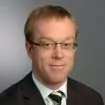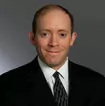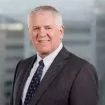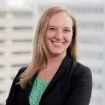The Supreme Court yesterday took a significant step to expand the universe of actors who can be held liable for a false statement under the federal securities laws. The Supreme Court held in Lorenzo v. SEC that a person who did not "make" a false statement under Rule 10b-5(b) may nonetheless be liable under Rule 10b-5(a) or (c) if he or she disseminates a false statement with intent to defraud.1 In so holding, the Court expanded the scope of "scheme liability" under the antifraud provisions of the federal securities laws, strengthening the hand of the SEC and private litigants to pursue a broader group of actors on the basis of allegedly false statements.
Prior to the Lorenzo decision, a number of circuit courts of appeal had held—citing the Supreme Court's Janus decision—that only "makers" of a false statement were liable under Rule 10b-5, because subsection (b) of that Rule specifically addresses "untrue statement[s]." In Lorenzo, which concerned an investment banker who sent an email to investors authored and directed by his boss that contained statements the banker knew to be false, the Court rejected that reasoning. It ruled that dissemination of someone else's false statement falls squarely within the language of subsections (a) and (c) of Rule 10b-5, which prohibit "devices," "schemes," and "artifices to defraud," as well "act[s], practice[s], or course[s] of business" that "operate . . . as a fraud or deceit." Accordingly, although the Court reaffirmed the holding of Janus that only "makers" of a false statement can be primarily liable under Rule 10b-5(b), the Court held that one who with scienter disseminates a false statement that is "made" by another can be primarily liable under Rule 10b-5(a) and (c) and may also be secondarily liable as an aider and abettor of the "maker's" primary violation of Rule 10b-5(b).
The decision was 6-2, with Justice Breyer writing for the Court and Justice Thomas for the dissent (Justice Kavanaugh recused himself, after dissenting from the D.C. Circuit's decision below). The majority relied on the dictionary definition of key terms in Rules 10b-5(a) and (c) to hold that disseminating false statements with intent to defraud could constitute a device, scheme, or artifice to defraud or an act or practice that operates as a fraud or deceit. The Court acknowledged that the provisions of Rules 10(b)-5(a) and (c) and Section 17(a)(1) are broad and their application "may present difficult problems of scope in borderline cases," potentially leading to some narrowing in future cases. However, the Court stated that Lorenzo was not such a case, as it involved "disseminating false or misleading information to prospective investors with the intent to defraud." The Court acknowledged that its holding would render the same conduct subject to primary liability (under Rules 10b-5(a) and (c)) and secondary liability (for substantially assisting another person's violation of Rule 10b-5(b)) but dismissed concerns over that result, reasoning that the criminal law likewise contains examples of the same conduct giving rise to both primary and secondary liability.
The Court's holding will empower the SEC to pursue more aggressively non-makers of false statements as primary violators of the antifraud provisions of the federal securities laws—and potentially subject them to correspondingly harsher penalties. We will be watching, for example, for efforts to expand liability to other disseminators of corporate statements, such as employees of a company's investor relations department, underwriters, and analysts. The scienter requirement contained in Rule 10b-5(a) and (c) and in Section 17(a)(1), which requires proof that a violator acted with intent, will continue to limit the breadth of the expansion of liability under those provisions. However, it is worth noting that the SEC has an avenue to pursue scheme liability under Section 17(a)(3), which courts have interpreted as requiring only a showing of negligence. The Lorenzo Court does not address this provision, but the SEC could use the Court's reasoning to pursue more aggressively as primary violators of section 17(a)(3) people who negligently disseminate, but are not themselves makers of, false statements. We also will be interested in the application of Lorenzo's dissemination principle to instances where the statement at issue was true when made but was false when disseminated at a later date. For example, if a statement in a set of corporate offering materials was accurate when the materials were approved but rendered materially false by the time another person disseminated the materials, the Court's holding may result in plaintiffs arguing for liability under Rule 10b-5(a) and (c) or Section 17(a)(1) if the disseminator knew that the statement had been rendered false or misleading by subsequent events.
The Court's decision is likely to embolden private plaintiffs to seek recovery against a broader range of persons under Rule 10b-5 who disseminated false statements or otherwise were involved in their creation, where that conduct itself is alleged to constitute an unlawful "scheme." Private plaintiffs cannot bring suit for alleged aiding and abetting,2 and thus the impact of the Lorenzo decision is likely to be seen most acutely in the shareholder class action context, where the bounds of "scheme liability" will be pushed and tested. In particular, the Court's holding may open a new front in private litigation against underwriters, increasing their potential exposure to fraud claims under Rule 10b-5.
Footnotes
1. Lorenzo v. SEC, 587 U.S. ___, No. 17-1077 (U.S. Mar. 27, 2019).
2. Central Bank of Denver, N.A. v. First Interstate Bank of Denver, N.A., 511 U.S. 164 (1994).
The content of this article is intended to provide a general guide to the subject matter. Specialist advice should be sought about your specific circumstances.








